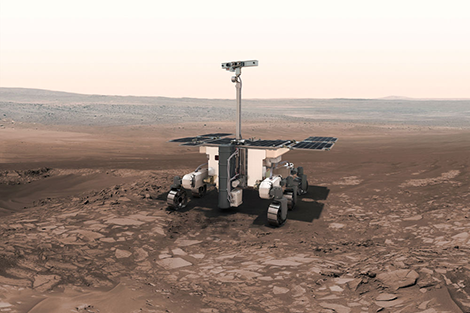
The ExoMars rover is set to land on the red planet in 2021
Sending a planetary landing craft to Mars is hard enough, but how do you test how it will manage once there?
Europe’s plan to send a UK-assembled robotic rover to the red planet was directed towards Ogle Models to deliver a precision prototype of the 2021 Mars Rover.
Making the body and solar panels for the Mars Lander chassis, the robotic rover is a drivable test vehicle to be used for terrain handling testing purposes in lab conditions.

The drivable scale model will help with tests in lab conditions
Driven both via remote control and autonomously, it will be used as part of the second phase of ExoMars to follow up studies exploring the possibility of life on Mars, drilling below the surface to detect organisms directly.
To keep the weight of the body and solar panels to a minimum, Ogle used fibre faced aluminium composite Cellite panels.
A CNC machine was used to create 15mm MDF jigs and a table router was used to cut out the Cellite panels from the jigs. Any exposed edges were filled with an automotive filler and sanded back to provide a seal.
Ogle’s model makers worked to bond a threaded metal insert to enable bolts and fixings to move securely.
The completed panels were then bonded onto SLS 3D printed extrusions which, when assembled, formed a three-dimensional skeleton with the Cellite panels spanning the flat surfaces.
The tub and solar array was finished in metallic gold which was matched to represent the radiation shielding on the real Mars Rover.
Ogle also designed and printed eight SLS hinges to allow the solar array to unfold.
This section was finished with large vinyls that were printed with the image of photovoltaic cells, and applied to the upper surfaces.
Ogle marketing and sales director Dave Bennion, said: “Whilst an array of CNC and SLS capabilities were used on this project, it was largely completed with bench model making skills to ensure each precise component functioned fully and fitted within the specific design and weight restrictions.
“Having such wide spread technologies available on-site at Ogle allowed the team to react quickly in making last minute adjustments to parts before sending them to SLS or CNC.
“The combination of materials, machines and the highly-skilled team has resulted in a very rigid yet lightweight prototype.”






